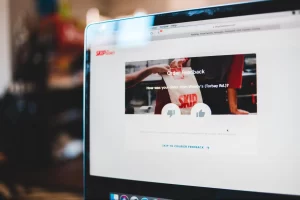How To Use Social Media Marketing To Promote Your Business
Social media marketing has become an essential tool for businesses looking to expand their reach and engage with customers. This article presents a comprehensive guide on leveraging various social media platforms effectively, drawing from the expertise of industry professionals. From creating value-driven content to utilizing local influencers, these strategies offer practical insights to help businesses thrive in the competitive online marketplace.
- Leverage Local Influencers for Authentic Partnerships
- Create Value-Driven Content Series
- Engage Through Comment Looping
- Utilize Google Posts for Local Visibility
- Build Trust with Consistent LinkedIn Messaging
- Amplify Hyper-Local Educational Content
- Drive Search Behavior with Social Posts
- Transform Customers into Brand Ambassadors
- Share Personal Experiences to Foster Connections
- Refine Targeting for Culturally Relevant Campaigns
- Share Real Transformations with Educational Content
- Tell Human Stories Behind Custom Jewelry
- Partner with Creators for Authentic Storytelling
- Turn Infographics into Bite-Sized Carousel Posts
- Use Three-Part Framework for Engaging Content
- Showcase Behind-the-Scenes Process on Instagram
- Share Raw Recovery Stories for Real Connection
- Create Interactive Content for Audience Participation
- Build Connected Story Loops Across Platforms
- Celebrate Student Achievements on Facebook
- Provide Consistent Value in Niche Content
- Repurpose Core Content Across Platforms
- Integrate Brands into AI-Generated Content
- Leverage Local Influencers for Authentic Partnerships
- Create Value-Driven Content Series
Leverage Local Influencers for Authentic Partnerships
I’m a nurse turned digital marketing specialist who has helped small healthcare businesses grow through strategic social media for over 15 years. My clinical background gives me unique insight into what healthcare consumers actually want to see online.
Local influencer partnerships have been my most successful strategy. Instead of chasing celebrity endorsements, I help my healthcare clients connect with local micro-influencers—think personal trainers, realtors, or even satisfied patients with 500-5,000 followers. One dermatology client saw a 75% increase in new patient bookings within weeks by partnering with three local fitness instructors who shared their skin treatment experiences.
The key is finding people who already interact with your target demographic daily. I search Instagram using location + service terms (like “denverdermatology” vs “dermatologydenver”—different results every time). Then I analyze their engagement rates, not just follower counts.
What makes this work is authenticity over reach. A local mom blogger with 800 engaged followers talking about your pediatric practice will drive more actual appointments than a celebrity post seen by millions. I always have clients offer complimentary consultations in exchange for honest social shares—it creates genuine testimonials that convert.
 Grace Ascione
Grace Ascione
Digital Marketing Specialist, Socorro Marketing
Create Value-Driven Content Series
One of the most effective ways to use social media to promote a business and connect with the target audience is by identifying their most common pain points—then creating a weekly content series that directly addresses them. Instead of only showcasing services, focus on educating, solving small problems, and offering useful insights. This builds trust and positions the brand as a go-to resource rather than just another company selling something.
For example, when promoting a local service-based business, create a series like “SEO Myths Busted Mondays” or “Local Visibility Tips Thursdays”—each post answers a real question the audience is likely struggling with. These micro-series not only drive steady engagement but also keep followers coming back for more, improving both reach and brand recall over time.
A particularly successful strategy:
We once ran a month-long campaign built around a “Problem-Solution-Proof” format. Each week, we posted a short real-world challenge the client’s customers faced (problem), how the service solved it (solution), and a quick testimonial or result (proof). This narrative approach worked extremely well, especially on Facebook and LinkedIn, where decision-makers appreciate practical outcomes.
The result? Higher quality engagement, more shares, and actual inbound inquiries—not just likes. It transformed the social feed from a marketing tool into a conversation engine.
Why it works: People engage when content feels relevant, helpful, and real. Focus on them—not just your offer—and your engagement and conversions will follow naturally.
 Aadarsh Kumar
Aadarsh Kumar
Digital Marketing Specialist, RyseVisibility Marketing Agency
Engage Through Comment Looping
We often say that audience engagement isn’t about being louder; it’s about being more useful at the right time. One strategy that has worked incredibly well for us is what we call ‘Comment Looping’ on LinkedIn.
Instead of just posting content and moving on, we track which comments get the most thoughtful responses, then build our next post around that thread.
This approach helped one of our B2B clients go from 5-10 likes per post to a 300% increase in qualified leads in just 60 days, without increasing their posting frequency. The game-changer was treating every post as the start of a conversation, not the end.
We discovered that when the next post connects directly to the last discussion, engagement skyrockets because people feel heard. Most brands treat social media like a broadcast channel. We treat it like a dialogue, and the results speak for themselves.
 Jock Breitwieser
Jock Breitwieser
Digital Marketing Strategist, SocialSellinator
Utilize Google Posts for Local Visibility
My biggest social media win came from treating Google Posts like a mini social media channel for local businesses. Most people ignore this feature, but I had an Augusta bakery client upload four new photos every Monday showing their latest creations. Within two months, they jumped from being invisible on Google Maps to achieving top 3 rankings for “custom cakes.”
The strategy that consistently delivers is what I call “Monday momentum posting”—showing fresh work weekly directly in your Google Business Profile. For a flooring client, we photographed their weekly project completions and posted them as Google Posts with brief descriptions. This generated a 34% increase in website clicks from Maps listings because people could see real, recent work.
The key insight most businesses miss is that Google Posts appear right in your Maps listing where customers are already looking. While everyone’s chasing Instagram followers, we’re capturing people with actual buying intent who are searching for services right now. One restaurant client used weekly menu specials in Google Posts and saw immediate reservation increases because hungry customers were making decisions on the spot.
Skip the vanity metrics on traditional social platforms. Focus your energy where customers are actively searching for what you sell—that’s where real business growth happens.
 Raymond Strippy
Raymond Strippy
Founder, Growth Catalyst Crew
Build Trust with Consistent LinkedIn Messaging
Posting consistently on LinkedIn turned out to be the most effective way to attract leads. Over 60% of inbound interest came directly from there. No paid ads, no gimmicks. Just clear and consistent messaging that positioned the brand as different in a crowded space.
Every post had to either teach something useful, challenge a common belief, or filter out the wrong audience. So the content stayed focused and intentional. The goal wasn’t likes or followers. It was relevance. Because being memorable drove conversions more than being popular ever did.
Contrarian takes performed well. Not for shock value, but because most content online sounds the same. Saying things others think but don’t say built a stronger connection. It showed confidence and clarity. So trust was built faster than with polished fluff.
Engagement didn’t end at the post. Direct messages were used to start real conversations, not pitch offers. If someone interacted regularly, a short message often led to a chat. Then a call. And sometimes a deal. No automation. Just human conversations. Because that one-to-one effort made a noticeable difference in building relationships.
Most businesses treat social media like a broadcast channel. But it works better as a magnet. It pulls in the right people and quietly pushes away the rest. So when tone, consistency, and courage line up, social media turns into a real growth channel.
 Josiah Roche
Josiah Roche
Fractional CMO, JRR Marketing
Amplify Hyper-Local Educational Content
As co-owner of Spotlight Media 360, my expertise in digital marketing and social media strategy focuses on truly connecting businesses with their audience to build reputation and drive growth. We view social media not just as a broadcast channel, but as a vital space for community engagement and establishing expertise.
A particularly successful strategy for us involves using social media to organically amplify hyper-local, educational content that addresses specific community needs. We develop “link-bait” pieces like infographics on topics such as “Average Cost of a Roof Replacement in Colorado” or articles discussing “Dealing with Hail Damage in Centennial,” making them highly shareable.
This approach positions our clients as valuable, trusted resources within their specific geographic areas. By sharing these insights organically in relevant local groups and profiles, our clients see significant community engagement, reinforcing their position as the “obvious choice” for local customers.
 Jeff Ryder
Jeff Ryder
Co-Owner, Spotlight Media 360
Drive Search Behavior with Social Posts
After optimizing SEO for 600+ businesses over 20 years, I found that social media isn’t just about posting–it’s about creating search signals that boost your main business goals.
My most successful strategy is “Social SEO Integration” where we post content that drives people to search for specific local keywords. For example, with a Denver restaurant client, instead of just posting food photos, we shared “Tuesday night specials” content that prompted followers to Google “best Italian restaurant Denver Tuesday deals.” This created a feedback loop where social engagement led to increased search volume for terms we were already ranking for.
The result was a 47% increase in Google My Business profile views and 23% more reservations within 60 days. We tracked this by monitoring both social engagement metrics and corresponding search console data for branded and local keywords.
The key is treating social media as a search behavior driver rather than just an engagement platform. Every post should include subtle calls-to-action that encourage followers to search for your business using terms you want to rank for locally.
 Noah Lopata
Noah Lopata
Owner, Epidemic Marketing
Transform Customers into Brand Ambassadors
As an experienced Social Media Manager, my approach to using social media to promote a business and engage an audience is a strategic blend of providing value and fostering community. I prioritize creating audience-centric content that educates and entertains, following the 80/20 rule to ensure our followers feel valued rather than just being sold to. I optimize our messaging for each platform, from professional posts on LinkedIn to visually-driven content on Instagram, and I actively engage with our community by responding to comments and messages to build genuine relationships. A strategy that has been particularly successful for me is leveraging user-generated content (UGC). By encouraging customers to share their experiences with our products using a branded hashtag, we not only generate authentic social proof but also transform our most loyal customers into our most effective brand ambassadors, building trust and a strong sense of community more powerfully than traditional advertising ever could.
 Rabia Fareed
Rabia Fareed
Social Media Manager, Concept Recall
Share Personal Experiences to Foster Connections
To promote my business effectively on social media, I’ve learned to prioritize connection over self-promotion. Instead of simply listing what I offer, I aim to share helpful, uplifting, and educational content. I focus especially on small business owners (my target market) who feel overwhelmed by the numerous digital demands.
One strategy that has made a significant difference is opening up about my personal experiences, particularly those tied to my faith. I’ve shared stories about the risks I took in starting Targeted Business Support, the challenging moments where I relied on God, and the ups and downs of running a business. This kind of honesty fosters closer connections. These posts don’t just remain static; they spark conversations. People relate to them and share their own highs and lows.
For me, social media isn’t merely a tool to beat an algorithm or accumulate likes. It’s a space I’ve tried to shape into something authentic. I’ve aimed to create a place where small business owners feel recognized, understood, and encouraged. That’s why they continue to engage with my content.
 Christine Thomas
Christine Thomas
Digital Marketing & Web Development Specialist, Targeted Business Support
Refine Targeting for Culturally Relevant Campaigns
I work for Synima, a global video agency with over 20 years of experience in advertising and social campaigns. We use social media to promote both our clients’ work and Synima’s presence in the creative industry. Our approach is tailored to each campaign, starting with a clear understanding of the goal and the target audience.
One strategy that has worked well for us is using targeted paid social media to build awareness around culturally relevant campaigns. For example, we recently ran a Diwali campaign for Shan Foods to promote their spice mix range. Impressions were a key metric, not just in terms of reach, but also how well they matched the intended audience. The campaign reached 3.8 million people, and after analyzing the data mid-campaign, we refined our targeting to focus on regions with higher concentrations of the Indian diaspora. That adjustment helped us reach an estimated 97.3% of Shan’s target audience and made the campaign more relevant and impactful.
 Billy Southard-Woolf
Billy Southard-Woolf
Marketing Strategy Specialist, Synima
Share Real Transformations with Educational Content
The one tactic that has outperformed everything else for us is short, face-forward Reels: 15-45 seconds of a trip leader or guest answering a single, real question (“What’s Bali like at dawn?” / “First sunset in Sri Lanka—worth the hype?”). A human face in the first second builds trust; the quick location cutaways stop the scroll. Post regularly, drop the same clips on TikTok, and jump on every comment within an hour so the thread feels like a live chat, not a billboard.
 Bryce Collins
Bryce Collins
Marketing Director, INTRO
Tell Human Stories Behind Custom Jewelry
One of the most effective ways I’ve used social media to promote Ozzie Mowing & Gardening is by sharing before-and-after transformations of client gardens along with short videos explaining the process behind the results. People love seeing real, visual proof of what we do and hearing a bit about how we did it. I recently posted a series on Instagram that followed a full backyard overhaul for a young family who wanted to turn their weedy, sloped space into a kid-friendly lawn with low-maintenance garden beds. I walked viewers through each stage of the project from initial consultation to soil prep, plant selection, and final planting. The posts got a lot of traction because they weren’t just pretty pictures. They showed the knowledge and strategy behind every decision. I think my 15 years in the industry, along with my horticulture certification, made the process look effortless and trustworthy.
That post series led directly to five new clients getting in touch, with three of them booking similar projects. I’ve learned that it’s not just about showing off a final product. It’s about building trust by educating your audience as you go. Sharing practical insights helps people realize you know your stuff and you’re not just mowing lawns or trimming hedges. My advice to anyone in a service-based business is to lean into your experience and let your audience see the value of what you know, not just what you do.
 Andrew Osborne
Andrew Osborne
Owner, Ozzie Mowing & Gardening
Partner with Creators for Authentic Storytelling
For our custom jewelry business, we use social media not just to showcase our products but to tell the human stories behind them. Our most successful strategy is what we call “The Heirloom’s Journey.”
This is a content approach that focuses entirely on the life of our jewelry after it leaves our workshop, making our clients the heroes of our brand story. Instead of simply asking for a review, our post-purchase process involves genuinely connecting with the client to hear about their milestone—the proposal, the anniversary celebration. With their enthusiastic permission, we then professionally retell that personal story on our social channels.
For example, we’ll create an Instagram carousel that starts with a photo from a client’s engagement and tells the brief story of how we collaborated to design their unique ring. This isn’t a product post; it’s a celebration of a new chapter that our brand was privileged to be a part of.
This strategy has been our most successful because it provides the ultimate form of social proof. It moves beyond showing what we make and instead showcases the emotional outcome our clients experience. Prospective customers see real people, real stories, and real joy associated with our brand, which builds a level of trust and connection that no ad campaign could ever achieve.
 Aviad Faruz
Aviad Faruz
CEO, FARUZO
Turn Infographics into Bite-Sized Carousel Posts
At The Goat Agency, we use social media strategically to build brand presence, engage with our target audience, and drive measurable results for clients.
One particularly successful approach is our focus on creator-led storytelling, partnering with influencers who align authentically with a brand’s values and audience. By combining data-driven influencer selection with platform-specific creative strategies, we produce content that feels native, drives interaction, and encourages organic sharing.
This approach consistently outperforms traditional advertising, helping brands build trust and long-term audience loyalty.
 Joanna Hughston
Joanna Hughston
Head of Marketing (Uk/Us), The Goat Agency
Use Three-Part Framework for Engaging Content
It’s rather challenging for me to use social media as a promotional channel for my business, since my work focuses on infographic designs. These are often appreciated more in context (like on websites or reports) than in a scrolling feed.
Nevertheless, I still use a few platforms like Instagram and LinkedIn to find my audience. One strategy that has worked particularly well is turning static infographic content into bite-sized, scroll-stopping carousel posts or short videos.
Instead of just posting a full infographic, I break it down into 3-5 key points and reformat them as a mini-narrative that guides the viewer through a clear takeaway. I also make time to engage with comments, reshare relevant discussions, and reach out to others in design or content strategy spaces.
 Diana Royanto
Diana Royanto
Content Writer, Milkwhale
Showcase Behind-the-Scenes Process on Instagram
When someone scrolls through social media, their brain subconsciously asks three questions: What do you have for me? What will it do for me? And what do you want me to do next? Once I understood this concept, everything changed.
Now, every post I create follows a simple three-part framework: the hook (to stop the scrolling), the content (to deliver value), and the CTA (Call to Action) (to guide their next move). It’s built around how people actually think and make decisions online.
The first time I used this approach intentionally, one 30-second video generated over 100 DMs and was shared more than 500 times—which led to a significant increase in followers, almost overnight. This success wasn’t because the video was flashy, but because it directly addressed what my audience needed to hear.
When your content aligns with how people scroll, think, and act—they don’t just watch. They engage. They share. And yes… they buy.
Share Raw Recovery Stories for Real Connection
For Olivia Croft, one social media strategy that has been especially effective is focusing on story-driven, behind-the-scenes content that gives our audience a real glimpse into our process and values. Instead of just showcasing finished products, we share the journey – introducing the makers, showing materials being sourced, and highlighting the care that goes into every piece. This approach builds trust and makes followers feel part of something bigger.
We use Instagram Stories and Reels extensively for this because they’re casual and authentic, which fits perfectly with the kind of connection we want to foster. Engaging directly through replies, polls, and DMs has also helped us create a community rather than just an audience.
 Peter Wootton
Peter Wootton
Co-Founder, Olivia Croft
Create Interactive Content for Audience Participation
How do you use social media effectively to promote your business and engage with your target audience? Share one social media marketing strategy that has been particularly successful for you.
We’re not selling sneakers or energy drinks — we’re saving lives. That’s how I look at social media for Ridgeline Recovery. It’s not about likes. It’s not about perfect filters. It’s about connection.
One strategy that has worked particularly well for us is sharing real stories without embellishment. We highlight raw, honest experiences from people in recovery — with their permission, of course. We don’t use overly produced videos or scripted testimonials. Instead, we feature real people talking about what it took to get clean, how they stumbled, and why they came back stronger.
This kind of content cuts through the noise. Families scrolling at midnight looking for hope — they stop. They listen. Because it feels real. That’s how we reach people. We don’t talk at them. We speak with them. There’s a big difference.
We also stay active in the comments. I personally reply to people when I can. If someone says, “I need help,” we respond within minutes. It’s not about building an audience. It’s about showing up for the one person who needs to see it that day.
At the end of the day, our social media isn’t marketing — it’s outreach. And in this line of work, that could mean the difference between life and death.
 Andy Danec
Andy Danec
Owner, Ridgeline Recovery LLC
Build Connected Story Loops Across Platforms
One social media strategy that has been especially effective in our overall marketing strategy for our customers is shifting away from long-form promotional posts and toward interactive content that encourages participation. Instead of just telling the audience something, we want them to do something (click, swipe, vote, test, or check a box). This simple shift has significantly increased both engagement and content retention.
We have leaned into formats like carousels with swipeable tips, checklists for IT or cybersecurity tasks, quick quizzes to assess pain points or vulnerabilities, and polls that invite followers to weigh in on industry trends or preferences. These types of posts feel more like tools than ads, and they are designed to give the audience something they can immediately use, even if they never work with us directly. And that is exactly the point: useful content builds trust, and trust drives conversion for our clients, which in turn is great for our own business growth.
For instance, we recently conducted an eight-email drip campaign for one of our clients that can be easily converted into social media posts. Two of the emails were very short, one maybe two sentences long. On one, the CTA offered an SMTP Readiness Checklist that a reader could click on and find a succinct list of what they need to do to ensure email deliverability and protect their domain’s reputation. On the other, there was a CTA Cybersecurity Resilience Quiz so readers could discover for themselves how resilient their businesses are against various cyber attacks.
We chose this approach because attention spans are short, and inboxes and social feeds are crowded. If someone is going to stop scrolling, it is usually because they feel like they are being invited in rather than being marketed to. By focusing on interactivity, we are not just pushing out content—we are creating small, valuable moments of connection that feel personal, actionable, and brand-aligned.
The results? Higher save and share rates, better insights from poll feedback, and a noticeable increase in people making contact, not with “sales questions,” but with conversations. That is how we know we are hitting the mark, when the content becomes a jumping-off point for dialogue instead of just being consumed passively.
 Matt Middlestetter
Matt Middlestetter
Managing Partner, Tactics Marketing
Celebrate Student Achievements on Facebook
An approach that has worked particularly well for us is to build “story loops” across platforms. Most brands take a very siloed approach to social media. They will post a graphic to Instagram, a link to LinkedIn, and maybe a tweet if they don’t forget. However, we flipped that on its head and tried to build a big connected story with our content across various channels where each piece would lead into the next.
For example, we posted a real behind-the-scenes TikTok showing the messy reality of working on a new product. Then we conducted an Instagram Stories poll where we asked people to choose between two designs. A few days later, we shared a LinkedIn update detailing what our beta users said about the product early on. Lastly, we broke down lessons learned during the build with a carousel post. By the time we launched the product, our audience felt as though they had been part of the process.
It is less about “announcing” and more about involving. People don’t care as much about the polished results, but they do want to feel like they are seeing something unfold in real-time and that they contributed to it. Engagement or involvement creates not only followers but loyalty.
We also intentionally respond to comments, DMs, and even the occasional criticism honestly. If someone points out a mistake, we don’t ignore it. We turn that into content. Social media is not a billboard; it is an evolving conversation.
The success is not only measured in likes or reach. This approach means having more qualified leads, shorter sales cycles, and even improvements to products based on early feedback. People pay attention when they feel seen. And when they feel involved, they stick around.
 Gianluca Ferruggia
Gianluca Ferruggia
General Manager, DesignRush
Provide Consistent Value in Niche Content
I love using our Facebook page to connect with our students and their families. It’s a lovely spot where I highlight our Student of the Month and other awesome competition awards to celebrate people’s hard work. Showcasing these achievements is my way of encouraging people to root for each other.
I also make sure to share loads of photos and quick summaries of our events, like abacus competitions or creative writing contests. And I don’t shy away from posting lively videos and reels from our daily classroom activities like think puzzles or dance breaks, which really invite people to join in on the fun. This mix of content helps keep our community involved and feeling like part of the family.
One of my favorite things to do is the “Challenge of the Week.” Every week, I post a new brain teaser or riddle, and I get people to drop their guesses in the comments. We acknowledge winners publicly, and parents see that interaction as fun learning, not just academics. It drives consistent weekly engagement, spreads virally among friends, and strengthens our bond with our young audience by turning learning into play.
 Mohit S. Jain
Mohit S. Jain
Founder, Genie Academy
Repurpose Core Content Across Platforms
One social media strategy that has worked particularly well for us at The Action Sports Translator is staying consistent with niche, value-driven content that speaks directly to our audience’s world – without constantly trying to sell something.
On LinkedIn, where our clients and collaborators spend their time, we’ve built a loyal following by showing up every week with content that’s relevant, useful, and aligned with our brand.
One of the best examples is our weekly post featuring open roles in the outdoor industry. Every Monday, we share a curated list of in-house, hybrid, and freelance jobs from outdoor, sports, and active lifestyle brands. It started as a small community gesture but quickly became one of our most engaged-with posts, driving thousands of profile visits and consistent follower growth.
Another format that performs well is our Friday “team adventures” series, where we share photos of our team out climbing, hiking, snowboarding, or spending time outdoors. These posts reinforce our identity as a translation and copywriting agency for the outdoor industry, build relatability, and help attract like-minded clients and talent.
Together, these two content pillars have helped us grow our LinkedIn following by nearly 100% in the past year, all through organic reach. More importantly, they’ve brought in real conversations, stronger inbound leads, and a community that actually cares about what we do.
 Martina Russo
Martina Russo
CEO, The Action Sports Translator
Integrate Brands into AI-Generated Content
Using social media effectively to promote your business and engage your target audience starts with knowing where your audience spends their time and tailoring your content accordingly.
We consistently post educational carousel posts or short, punchy video clips that solve one specific problem or share one actionable tip for our audience. Remember that consistency, authenticity, and interaction are key pillars of success across all platforms.
 Wan Ting Tan
Wan Ting Tan
Owner of Springboard, SpringBoard
Leverage Local Influencers for Authentic Partnerships
One social media strategy that has worked well is using “content layering” to extend the life and reach of high-performing pieces. Instead of treating each social post as a one-off, we repurpose core content (such as webinars, blog posts, or case studies) into multiple formats tailored to each platform—short clips for LinkedIn, carousels for Instagram, quotes for X, and quick tips for Threads.
The key is not just reposting, but adapting. We tweak the messaging based on where the audience is in the funnel and what kind of interaction the platform encourages. This approach increases touchpoints without burning out the content team or diluting the message.
Engagement also improves when we treat social media less like a broadcast channel and more like a feedback loop. We respond, ask questions, and look for patterns in comments and direct messages (DMs). That insight feeds directly into future campaigns, making social media a useful tool for both distribution and discovery.
 Dan Taylor
Dan Taylor
Partner, SALT.agency
Create Value-Driven Content Series
CMOs are always looking for better ways to plug into culture, but a common challenge has been finding authentic ways to engage without disrupting the conversation. Thanks to AI, everyone is now a creator, making it more challenging to stand out. Culture is what truly matters, especially when doing social media marketing for a client—it’s about becoming part of the dialogue, not just interrupting it. That’s why we built TrackMyPrompts.com. This platform allows businesses to seamlessly integrate their brand into high-performing, AI-generated content, offering real-time insights into what resonates with audiences. With features like the leaderboard, where brands can see top-performing prompts and request brand mentions directly from live social content, we help businesses plug into culture, foster loyalty, and drive engagement—without the traditional noise of ads or influencer-driven campaigns.
 Andrew Juma
Andrew Juma
Founder, Trackmyprompts.com







































